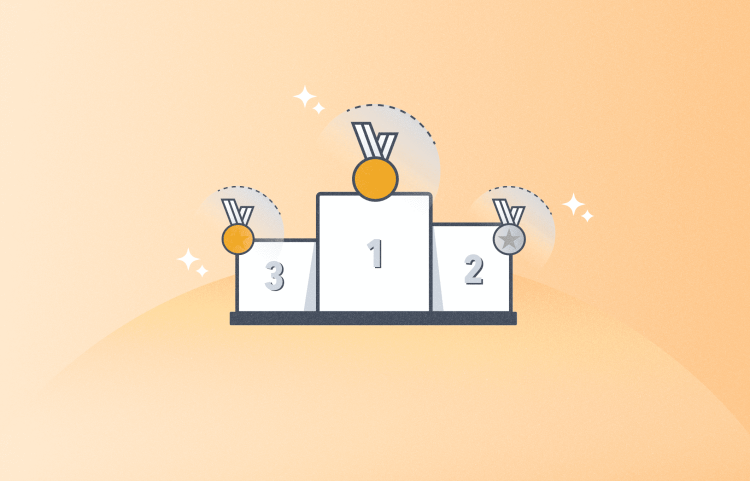
Choose the Best Amazon Pricing Strategy for Your Business
AMZ Advisers, April 28, 2021
Amazon has become a great source of income for many entrepreneurs. While selling online is quite convenient, it is clear that it comes with its own series of challenges, and one of them is finding the best Amazon pricing strategy.
In this guide, we will share our insight into how you can choose the right pricing strategy for your Amazon business and what additional tools you can use to determine the prices of your products more accurately.
Scroll down to learn more!
Why Is Pricing on Amazon so Important?
The way you price your products can make – or break – the online presence and credibility of your business. According to Bigcommerce.com, “…most sales on Amazon happen through search and more than 70% of it on page one of Amazon search results…”.
Therefore, it is suggested that you invest some time in optimizing your product detail page, always abiding by Amazon’s product detail page rules, so customers can find your products easier and faster.
Pricing can be quite challenging for many sellers, especially when there’s so much competition. So, you might want to consider selling Private Label products through Amazon FBA. This will reduce the competition, you’ll get to add a personal touch to your brand so people can remember you, and you can even do your own website to increase your exposure and gain more customers.
Price Realistically
In a few words, if you want to be competitive on Amazon, your pricing strategy must be fair and versatile.
As soon as you make your products available to the public, customers will have instant visibility of your competitors’ prices as well. Trust us! Most shoppers do their research before purchasing an item, and they’ll go for the option that best fits their pocket.
Amazon even has a pricing table built right into most listings for shoppers to compare if your product is more expensive than those of the competitors.
Keep in mind that, in some cases, customers will also have to cover shipping costs and import fees, and that the item price and the total price may vary.

Source: Amazon.com
How to Calculate the Best Price for an Item?
Amazon sellers need to do extensive research before deciding on a price.
However, it can be simplified to two main factors: the price has to be both competitive and profitable.
Do the math and determine the lowest price you can offer based on your margin requirements. Here’s a formula that can help you understand your profit margin better:

Considering your highest and lowest prices can give you an idea of what the average price should be. Before you set on a number, consider all your product acquisition costs to make sure you are on the profitable side.
This includes shipping, customs, payment methods, Amazon fees like FBA or customer return fees, and commissions. You should also consider your seller repay charges and general allocation costs.
Pricing Strategies for Amazon Sellers
Now that you have a better idea of how to set the base price for your products, it’s time to think about strategies.
This is a list of the most popular pricing strategies used by Amazon sellers:
Amazon Dynamic Pricing
You’ve probably heard about Amazon Dynamic pricing before. It’s a very popular pricing strategy in which the price of a product readjusts, depending on the market conditions and supply and demand.
This means that on Amazon, a price can change every few minutes due to the big competition between sellers and the ongoing changes in buyer demand. A more dynamic market means more price readjustments.
Being able to adjust your prices to capture new buyers is now possible thanks to machine learning. Sellers can carry out competitive research to find the optimal price points.
There are five main strategies that you can implement to help you decide how to price your products:
1. Focus on supply and demand
This is all about what the market wants. It all comes down to the type of product you decide to sell and the demand it has on the marketplace. You may end up slashing your prices if you miscalculate the demand.
2. Price below
Offer your products at the cheapest price to stand out from the competition–at least for a while. Being the lowest price on Amazon will get you some attention from possible customers.
But be careful! If your brand gets a reputation for being the cheapest out there, it may affect how the audience thinks about your product quality.
In the long run, it can also create unhealthy competition, which can have a negative impact on your business. It’s important to note that setting a low price doesn’t guarantee that you will get the Buy Box, however.
This strategy is useful for sellers that are struggling with their ratings, but it is not a long-term solution.
3. Price above
Selling your products at a higher price than your competitors. Although it may sound a little crazy, it all depends on your brand’s reputation and your status as a seller.
Make sure you have all the right reasons to sell at a higher price. You’ll get buyers that are looking for the best quality and who want to avoid shady products that are suspiciously cheap.
4. Competitor-based pricing
Look at your competitor’s prices and match it. If your product is similar in quality, this is a good option to stay competitive.
However, we recommend that you have a more solid strategy than matching prices. You should only do this in a way that buyers can distinguish you from the other sellers.
5. Play it safe
If you’re not in a position of taking chances or if you’re just starting to experiment with dynamic pricing, then the easiest way is to decide on a price that is not too high and not too low. Stay in the game without sacrificing your margins too much.
Personalized or Customer-Centric Pricing
Many companies collect data from their users to offer them customized prices, depending on their location, search and buying history, preferences, etc. This makes the shopper feel as if those prices are being adjusted just for them and most likely leads them to click the Buy Box.
Remember that the main goal is to generate as many sales as you can while getting great product reviews by providing the best customer service.
Will I win the Buy Box if I lower my prices?
Many experts believe this feature to be directly influenced by your pricing strategy.
Pricing strategies can be applied depending on the product, the seasonality, and your type of inventory.
Just remember to apply the following:
If you’re cutting down a price, make sure it is to increase your Amazon sales rank. This can boost your organic sales down the road.
If you’re launching a new product, it’s a good idea to offer a discount.
Bundling products is a good way to get a better margin while offering a price cut.
Holiday seasons usually imply a sale or a discount. Take advantage of Amazon’s traffic increasing during certain seasons.
Although repricing is a great way to increase sales, your prices shouldn’t vary too much. As a seller, you depend on other tools and strategies to have a successful online business.
A fundamental part of improving your brand awareness is to set some stability in your products, even if you’re working with dynamic prices.
Special Offers
Amazon allows you to offer customers promotions to increase your chances of sealing a deal.
Here are some discounts you can offer on certain products:
New products
Offer a launch discount for all customers of 15%. If you have a customer email list or repeat customers, you can offer them up to 50% off.
Bundled products
You can offer up to a 40% discount on the second product for bundled packages.
Stock clearance
In case you have overstock, this can help get rid of your overstock. It can also revive a dead product. This will depend on the value of the product, but you can go as high as offering 60% off.
Here’s a clear example of a sweet deal on a yoga mat:
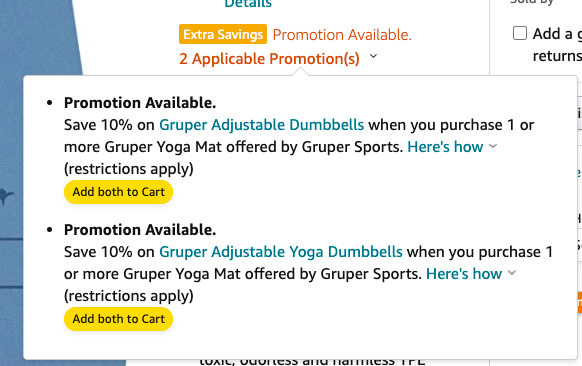
Source: Amazon.com
In addition, this brand is offering a 10% off coupon for a similar product:
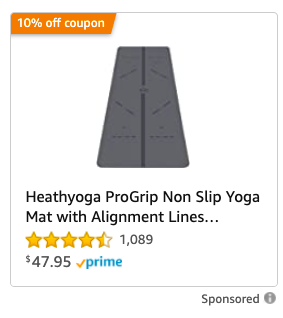
Source: Amazon.com
These types of last-minute offers will keep your customers hooked, and most likely they will recommend your products to other potential customers.
Pricing Tools
It’s worth mentioning that you don’t have to implement your strategies manually. There are many tools out there that use complex algorithms and mechanics to determine the optimal price for your ASINs:
Amazon Pricing Calculator
Amazon offers a free cost calculator to help you estimate what your listing price should be. However, this tool does not include taxes or any additional costs like selling, shipping or storage fees.
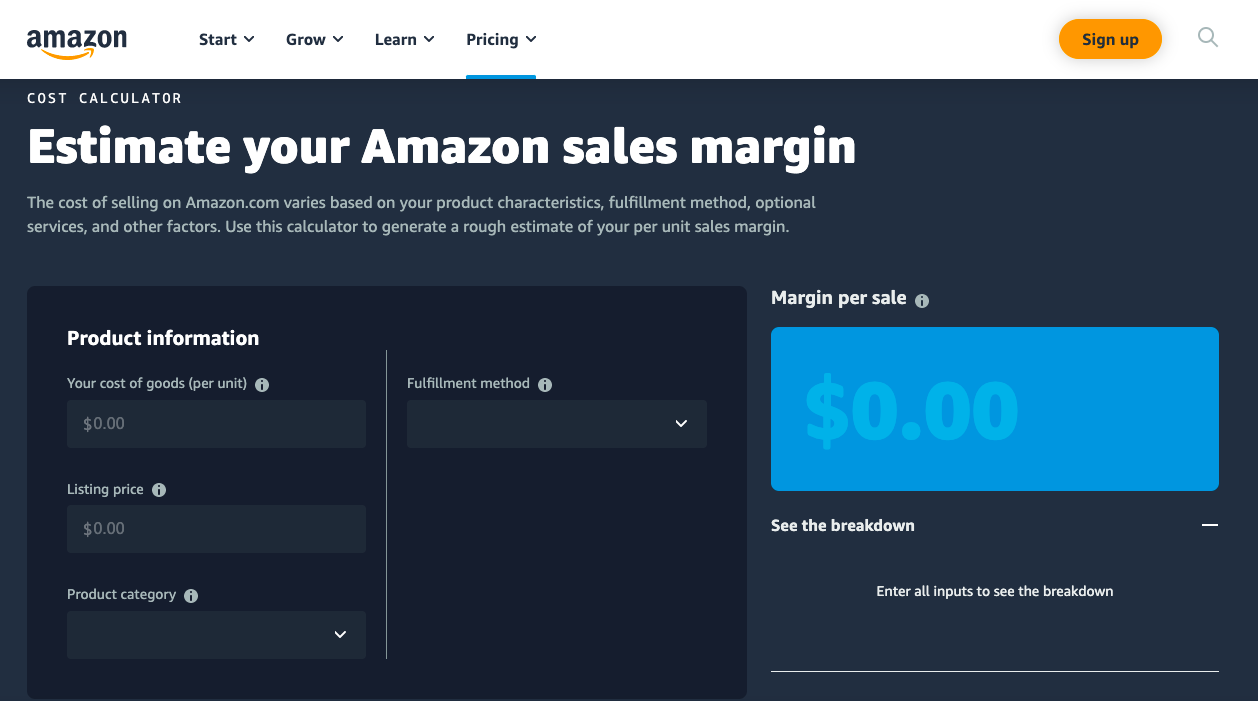
Source: Amazon.com
Amazon Automate Pricing
Of course, Amazon would have a pricing tool, they have everything sellers need. But, is it the best option? If you go into Seller Central you can set pricing rules depending on what fits your business objectives, you can also select which ASINs will have those rules applied to them.
The downside to this tool is that it generally works by lowering your prices compared to the prices of your competitors, and as we mentioned above, this is great for shoppers, but not for your profits.
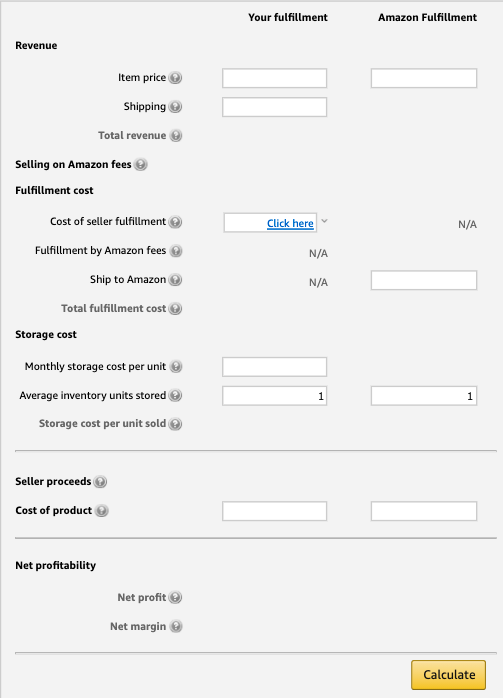
Source: Amazon Seller Central
Repricing with Algorithms
Sellers who have a lot of experience tend to go for third-party software mainly because it allows them to have all the information they need to be concentrated in a single source. In turn, it makes it easier to determine what products to restock, when to change prices and many other important decisions that can be taken with data at the base of every choice.
The functionality of these tools and algorithms extends beyond pricing and many sellers rely on this type of software to maximize profit margins.
Manual Pricing
Though this isn’t a proper tool in terms of software, we still had to talk about it, and our conclusion is; don’t do it.
For manual pricing to work you would need to be highly experienced in what you’re doing, not to mention you need to be checking the price of your competitors many times a day, it becomes a huge effort with the results not being as optimal as some of the other tools.
Final Thoughts
The bottom line is that choosing the right Amazon pricing strategy can help you outsell your competition.
With adequate tools and technology, sellers can now optimize their pricing process for their entire catalog. Easily set your highest and lowest price boundaries to properly reflect the value of your brand to navigate the ever-changing market of eCommerce.
Your results will depend on the optimization of your product detail page, the nature of your products, the customer data and strategy you decide to use.
To get started or learn more about how Perpetua can help you scale your Amazon Advertising business, contact us at hello@perpetua.io